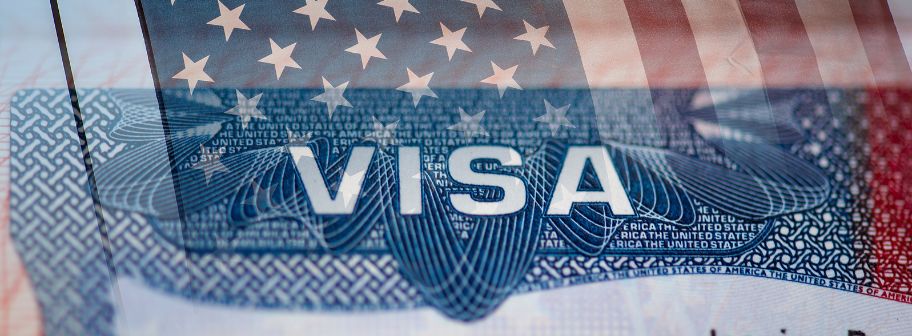The K1 Visa – A brief synopsis
(1) K1 Visa
Requirements
- Must be a foreign-citizen fiancé(e) of a U.S. citizen is the recipient of an approved Petition for Alien Fiancé(e)
- Must be legally free to marry at the time the petition was filed and remain so thereafter, and must be legally possible according to U.S. laws in the State in which the marriage will occur.
- Must have met the person within the past two years, USCIS may grant an exception to this requirement based on extreme hardship for the U.S. citizen sponsor to personally meet the foreign-citizen fiancé(e) or if it is contrary to culture for man and woman to meet before marriage.
Pros
- The K1 visa allows foreign-citizen fiancé(e) to travel to the United States to marry his or her U.S. citizen sponsor and later apply for citizenship.
Cons
- Under the K1 visa rules Foreign-citizen fiancé(e) must marry U.S. sponsor within 90 of U.S. entry
- This is a non-immigration visa, further steps to become a permanent residence of the United States must be made.
Procedures
– First Step: Filing the Petition
i. The U.S. citizen sponsor must file Form I-129f , Petition for Alien Fiancé(e)
ii. After USCIS approves the petition, it is sent to National Visa Center (NVC). The NVC will give you a case number and send your petition to the U.S. Embassy or Consulate where the foreign-citizen fiancé(e) lives.
– Second Step: Applying for the Visa
i. NVC will mail you a letter when it sends your fiancé(e) case to the U.S. Embassy or Consulate. Once you receive this letter inform your fiancé(e) to take the required actions.
ii. Documentation
File Form DS-160, Online Non-immigrant Visa Application. Must complete form DS-160 and print confirmation page and bring to the interview
Have a valid passport, Divorce or death certificates, Police certificates, Medical Examination, Evidence of financial support (form I-134), Two 2×2 photographs, Evidence of relationship, payment and fees.
Approximate Time
– 6-9 months
(2) Green Card inside the United States (The K1 visa holder will need to apply for the Green card after their initial 90 days in the US)
Requirements for applying for the Green card
- Spouse
- Unmarried child under the age of 21
- Parent (if the U.S. citizen is over the age of 21)
Pros
- Immediate relatives have special immigration priority and do not have to wait in line for a visa number to become available for them to immigrate.
Cons
- Under the Two Step Process, the beneficiary must wait for U.S. citizen immediate relative to file Form I-130
- Process takes considerable amount of time.
Procedures
- One Step Process
Certain people are eligible to apply for a green card (permanent residence) while inside the United States. An immediate relative relationship allows you to apply on Form I-485, Application to Register Permanent Residence or Adjust Status, to become a permanent resident at the same time your U.S. citizen petitioner files Form I-130, Petition for Alien Relative (A K1 visa holder will fall under the One Step process category)
- Two Step Process
Step One – Your U.S. citizen immediate relative must file the Form I-130 for you and it must be either pending or approved.
Step Two – After you receive Form I-797, Notice of Action, showing that the Form I-130 has either been received by us or approved, then you may file Form I-485. When you file your I-485 application package, you must include a copy of the Form I-130 receipt or approval notice (the Form I-797).
Approximate Time
- 9-15 months
(3) Green Card while outside the United States (either if the marriage took place abroad, or if the K1 visa holder leaves the US after the marriage)
Requirements
- Spouse
- Unmarried child under the age of 21
- Parent (if the U.S. citizen is over the age of 21)
Pros
- Can wait at current residence while the application process ensues.
- Have one year after notification to apply
Cons
- Must wait for a visa to come available
- Must travel to the U.S. to become a permanent residence once admitted in a U.S. port of entry.
- If you do not apply within one year following the notification from the Department State, the petition may be terminated.
- Process takes considerable amount of time.
Procedures
- Consular Processing
USCIS works with the Department of State to issue a visa on an approved Form I-130 petition when a visa is available. You may then travel on the visa and will officially become a permanent resident when admitted at a U.S. port of entry. For more information on consular processing for immediate relatives of U.S. citizens, see the “Consular Processing” link to the left under “Green Card Processes & Procedures.” The Department of State will notify you when you are eligible to apply for an immigrant visa. If you do not apply for an immigrant visa within one year following notification from the Department of State, your petition may be terminated.
Approximate Time
- 9-15 months




